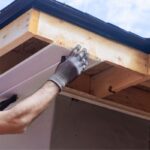While traditional forms of marketing real estate fizzle out, a new era of digital marketing has dawned. Thanks to the global connectivity of the internet, people no longer have to turn to traditional media to market a home or condo or any other form of real estate. Gone are the days where consumers lack transparency into a market that once used to confuse and perplex everyday average individuals looking to buy or sell a home.
No. Today, consumers are savvy. As the internet has evolved, so has our unfettered access to information across the spectrum. In turn, the real estate market, which has been one of the most lucrative and profitable lines of business since the dawn of time, has seen an explosive growth of agents and owners vying for the buyer’s attention through any form of digital marketing means.
Yet, like every other highly-saturated field, it’s no longer simple to gain the customer’s awareness. They’ve learned to weed out the nuisances and cancel the noise as they search for the perfect home on the web. With fierce competition in the marketplace, potential home buyers are armed with all the data they could possibly need, forcing real estate agents to compete and set themselves apart more fortuitously than before.
The truth? It’s difficult to market a home on the internet. It’s become excruciatingly painful to set yourself apart from the fray. With the biggest players in the market aggregating themselves through sites like Zillow, Trulia and others, most have come to realize that real estate marketing is an extremely complex field that requires weaving together a number of online marketing disciplines such as blogging, social media and search engine optimization, just to name a few.
While much of this has little to do with the everyday consumer, real estate agents are constantly searching for ways they can gain an edge in digital real estate marketing. To that effect, I pondered the question for a while about the future of real estate marketing. I wondered what realtors and owners were doing to set themselves apart in such a convoluted and competitive online space.
In a recent article where I covered virtual reality’s impact on three different industries, one of those industries that I covered was real estate. The key player in that industry? Matterport. By far, this is one of the most innovative and impressive companies that I have come across and I wanted to dive in further to learn more about the product behind the company.
If you’ve never heard of Matterport, then prepare to be impressed. Their camera captures a 3D-dollhouse rendering of any space that can be toured and viewed, not only in virtual reality, but across any device. When real estate agents and home owners are looking for an edge in marketing their homes, condos, offices, yachts and anything else for that matter, they turn to Matterport.
I’m not often this impressed by a company’s product or services. I’ve not been paid to endorse them and have no deals whatsoever in place. Yet, as a digital marketing sleuth and someone who is acutely vested in the real estate industry, I am always looking for the next best thing, so to speak.
In a brief conversation with Bill Brown, CEO of the company, he informed me that “Matterport’s mission is to give people the freedom to experience any place at any time… establishing 3D and VR models as a primary medium for experiencing, sharing, and re-imagining the world.”
So to ensure that I sated my ongoing lust for information about the company’s product, I reached out. The otherwise-expensive camera that the company provides is at the center of its technology. With its previous iteration hovering around the $5,000 mark (recently reduced to $3,600), some would consider this a significant investment. So, I wanted to give a test drive on my own. I wanted to see what all this hype was about.
Matterport came through. I reached out and was connected with Sibyl Chen and Chris Hoang, who graciously shipped me a loaner camera to put the tech to firsthand use. The goal? I wanted to see just how difficult it was to capture a space in 3D. I wanted to know if this really was the cutting edge tech that lived up to all the hype. If you’ve never seen a Matterport scan or ‘flown through’ a Matterport home, then you can see a variety of examples in their gallery, here.
Chen informs me that Matterport has captured over 400,000 spaces in over 70 countries. This includes not only traditional real estate in the form of homes and condos, but also commercial real estate, hotels, retail shops, restaurants and even historical museums and other landmarks around the world. In total, these spaces have received over 100,000,000 million views. Here are some of the most interesting things that have been done with these spaces:
- Real estate transactions (on homes with prices points as high as $8million)
- Vacation rental bookings all over the world
- Venue booking for corporate events, wedding, etc
- Education of telemarketing staff on features in different hotels they “support”
- Communications with facilities staff to to support maintenance needs
- Construction documentation for commercial buildings
- As built capture of major commercial buildings
- Journalistic and immersive storytelling of culturally or historically significant real world locations (e.g. Iraq bomb site, Rosa Parks Bus, Martin Luther King church)
- Interactive walk throughs of TV sets (e.g. Seinfeld set)
What Is Real Estate Marketing?
Okay, before I dive into my review of the Matterport system and capturing a space in 3D that can even be viewed in virtual reality, let’s look at what real estate marketing actually is. Today, when we’re talking about real estate marketing, we’re primarily discussing online marketing in the digital realm.
For those that are acclimated to online marketing, marketing real estate is straightforward. However, it’s clearly the exception rather than the norm. The truth is that real estate marketing is difficult because online marketing is difficult. Without an established audience and platform with real authority, getting the proverbial word out is a major hurdle.
However, clearly real estate marketing isn’t just digital. Real estate agencies and realtors have been sending out direct mailers for ages and posting ads in traditional media. However, that kind of marketing is now dying off. As we complete the shift from paper to digital, traditional senses of marketing will also slowly evaporate. As more newspapers and magazines shutter, this becomes more apparent.
Today, marketing real estate isn’t about sending out direct mailers; it’s about launching email campaigns towards targeted buyers interested in homes in your area. To do that, you need an established and well-vetted list. To get that list, you need a squeeze page to attract buyers with something like a home appraisal tool or renovation tool to help them crunch some numbers in exchange for that lucrative email address.
Clearly, online marketing trumps traditional marketing in forms of both effectiveness and potential for saturation, but how do you go about marketing a home or condo on the internet? If you’re going to set yourself apart, not only do you need to understand the fundamentals and mechanics of digitally marketing real estate, but you also need to ensure you have something that accurately portrays your home.
Simply put, pictures just don’t do it anymore. Everyone knows that videos have begun springing up across realtors’ websites in an effort to better showcase a home. It’s obvious that videos help. However, today, a simple video just won’t cut it anymore, nor will great photos. Today, for realtors and prospective home owners to set themselves apart in the digital marketing fray, they need 3D models and showcases of their homes.
Why 3D Models Are Important
Humans are meant to implement all of our senses when observing an object. This is done genetically by design to perceive a threat or understand whether an object can help us to sustain life as in the form of food or to allow us to achieve some other innate goal such as provide shelter or water and so on. Up until now, the internet has largely afforded us the opportunity to use two of our senses. We can see and hear the internet in two dimensions.
While that’s great for the time being, it doesn’t provide the immersive experience that something like virtual reality can provide, especially when we can physically interact with a digital environment. Now, that doesn’t mean you need virtual reality to market real estate. However, by using 3D modeling cameras to capture a space, you can better convey it with spacial recognition and capture the entire environment and provide a walkthrough that largely replicates being physically present.
Matterport’s 3D camera capture 10 million points in space per second as it spins around, wildly stitching the environment together. When complete, the camera provides a realistic dollhouse model that anyone can fly through. It’s an impressive tool that you can add to any real estate marketing arsenal on the web.
At first glance, I was under the assumption that the camera would be far more difficult to use than it seemed. It wasn’t. The setup was simple enough. Place the camera on a tripod and turn it on. You need to sync with an iPad and download the Matterport application. Once that’s complete, you can create scans and move the camera around to stitch the entire unit together. As you move to another floor, you simply indicate that you’re adding a new floor.
The camera and software are clever enough to know when the camera has been moved too far. You need to ensure that you move it roughly 6 feet from the last point to stitch the space properly together. If the camera can’t spatially link the two scans together, you need to do it over again. Each scan takes about 15-20 seconds so mistakes can cost you some time, but once you get acclimated to its use, it goes relatively smoothly.
During my test of the system, I scanned two projects. The first was a relatively “simple,” 5-bedroom home in Beverly Hills. The second project, a massive yacht, was a little bit more challenging. The only issue that I had during the scans occurred while scanning the stairs and stitching together one floor with the next. However, after a few tries, I got it down.
My goal in conducting the scans was to do one that was super-simple and one that was highly complex. For the complex scan, I used Howard Leight’s yacht in Marina del Rey, aptly coined, Leight Star. Howard Leight is the billionaire founder of an intelligent hearing solutions business, a company that was long-ago acquired by Honeywell. Leight is also a prodigious real estate investor and owner of Malibu Rocky Oaks, a winery in Malibu often featured on some of the most influential Instagram accounts.
This was the second scan that I tried and for good reason. The scan of the yacht was far more complex than the home. But I figured if I could scan the most complex type of space, with the most abundance of light, then I could really master the system. It was nowhere nearly as good as the other scan that exists for another superyacht in Matterport’s gallery called the Aurora Yacht, but I came pretty darn close for a novice.
Overall, out of the box, the system was simple and easy to use. Once the data was loaded onto the camera, all you have to do is upload it to Matterport’s servers, where they process the files into the 3D dollhouse scan, which you can easily embed in a WordPress post, giving anyone with a blog or website to market their real estate online simply and effectively.
Author, blogger, software engineer and serial entrepreneur. Contributor to some of the biggest media platforms including Forbes, Entrepreneur Magazine, Huffington Post and Engadget. Founder and curator of WanderlustWorker.com, one of the most popular inspirational blogs in t…






